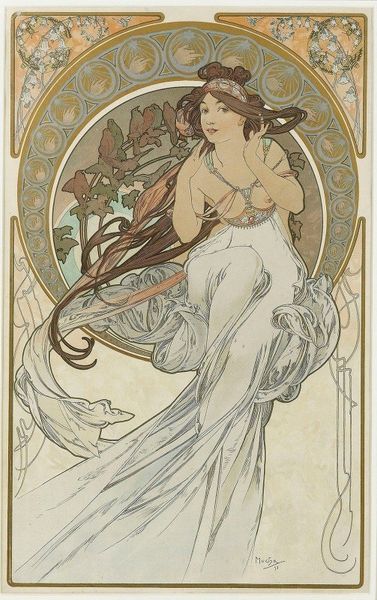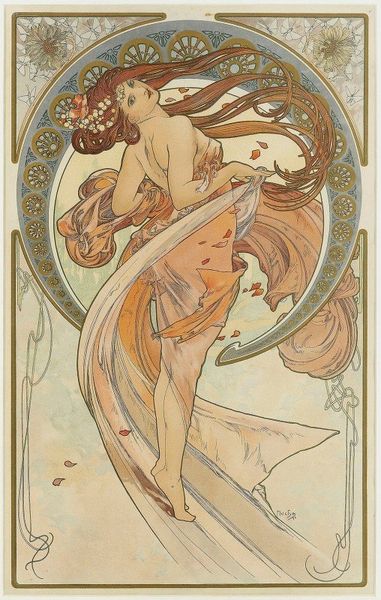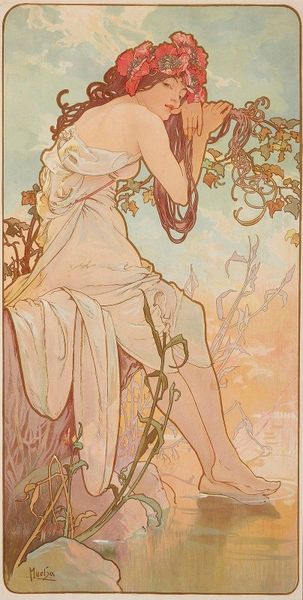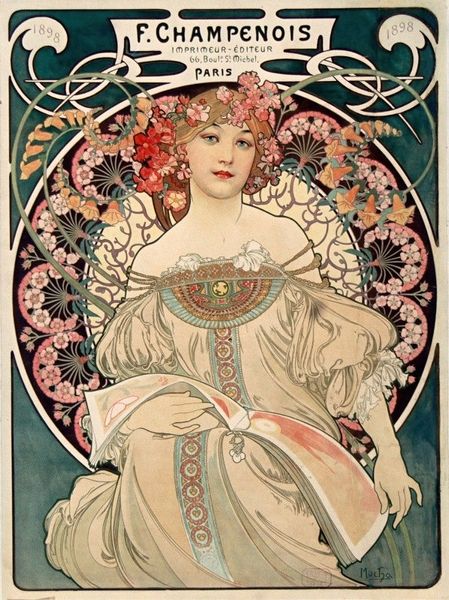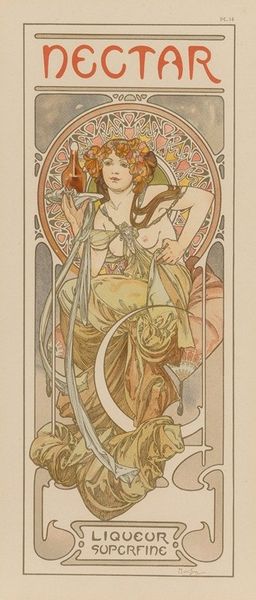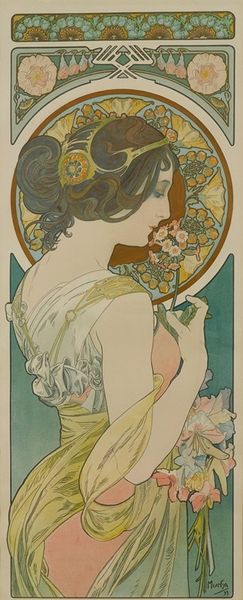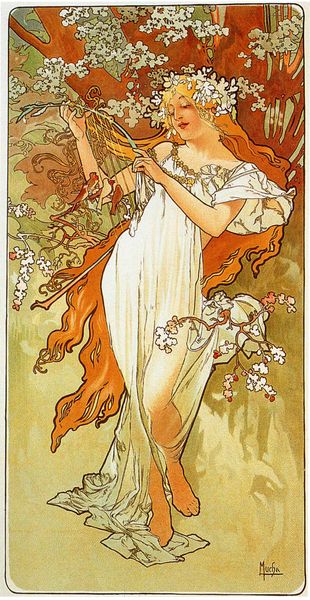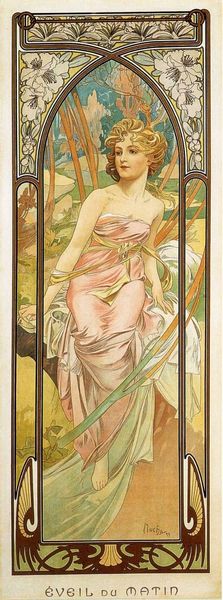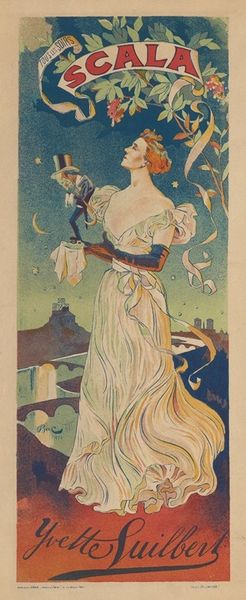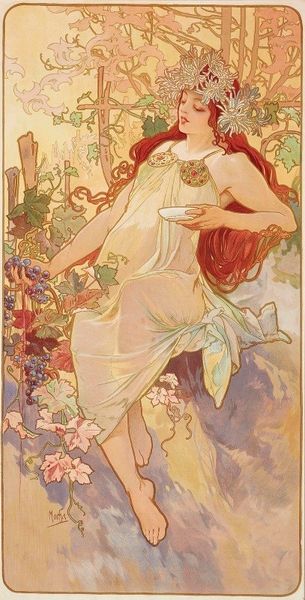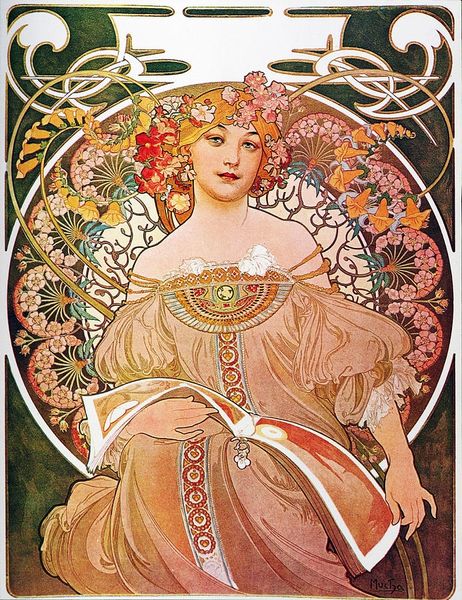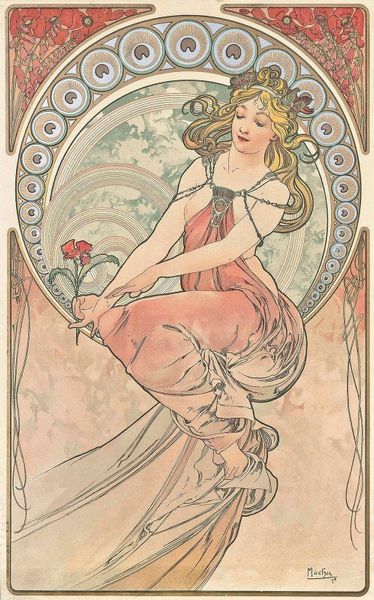
drawing, coloured-pencil
#
portrait
#
drawing
#
art-nouveau
#
coloured-pencil
#
caricature
#
figuration
#
coloured pencil
#
line
#
symbolism
Copyright: Public Domain: Artvee
Curator: Oh, there's such a dreamy quality to this one. Almost like stepping into a whispered secret. Editor: This is Alphonse Mucha's "The Arts 4," created in 1898. We're looking at a piece executed with coloured pencils, a somewhat unconventional choice that aligns with the period’s exploration of blurring the lines between fine art and decorative design. What strikes me first is its strong vertical format, clearly meant for poster production. Curator: Absolutely, it has that iconic Art Nouveau flow! That elegant woman… she looks burdened somehow, lost in thought under her wreath of leaves. It makes me wonder about the pressures facing artists back then. The social expectations, the commodification... It's almost palpable. Editor: The work reflects the social climate through its reliance on industrial methods of mass production – lithography was at its peak here. Look at how the line work defines the subject, facilitating easy reproduction across prints. It's high art designed for consumption. Curator: True! The colours feel delicate, ethereal—yet there’s also something earthy grounding the figure. Perhaps hinting at a push-pull between artistic aspirations and societal demands? Like, "Can I be a visionary AND still pay rent?". Editor: Her robes billow, conveying movement, or possibly exhaustion. It could represent that fine line. The choice of media is significant here. Pencil – often associated with sketching and prep work – is elevated to a final art form, questioning traditional art hierarchies and value assigned based on materials and labor. Curator: Makes me ponder where this piece fits into Mucha's larger commercial endeavors... Did he see these commissions as constraints, opportunities, or something in between? It really tickles the imagination. Editor: I think seeing it primarily in context as product can provide critical perspectives. Consider how Mucha integrated design and fine art through new commercial possibilities, affecting consumption culture. Curator: Ultimately, it reminds me that even in moments of deep thought, we're always engaging in conversation – with ourselves, with history, with society. I’m not sure I was expecting to feel *that*! Editor: Exactly! It offers tangible insights into the economic structures shaping turn-of-the-century art practices. Material history really does alter the way you perceive the surface beauty of these images.
Comments
No comments
Be the first to comment and join the conversation on the ultimate creative platform.
